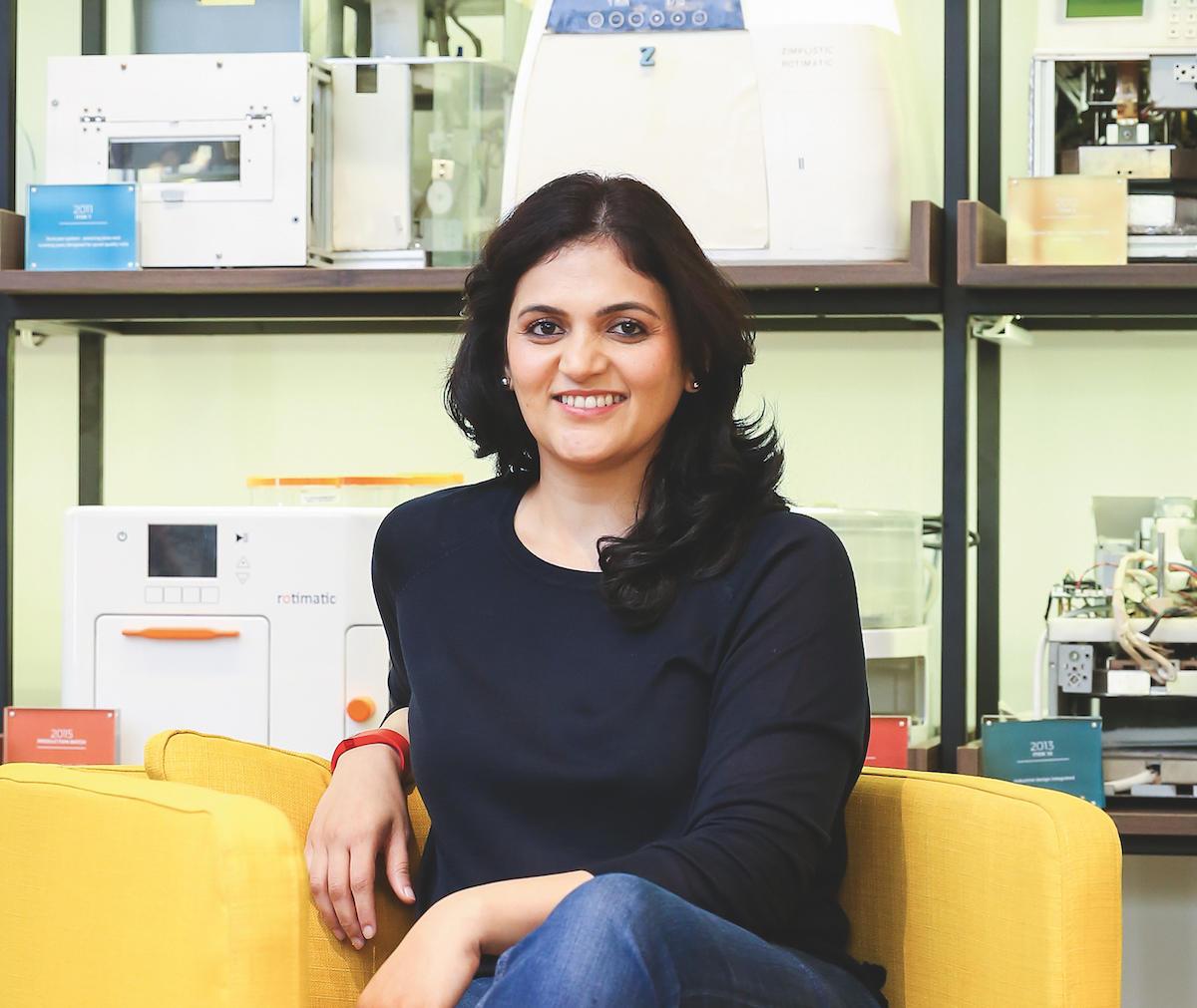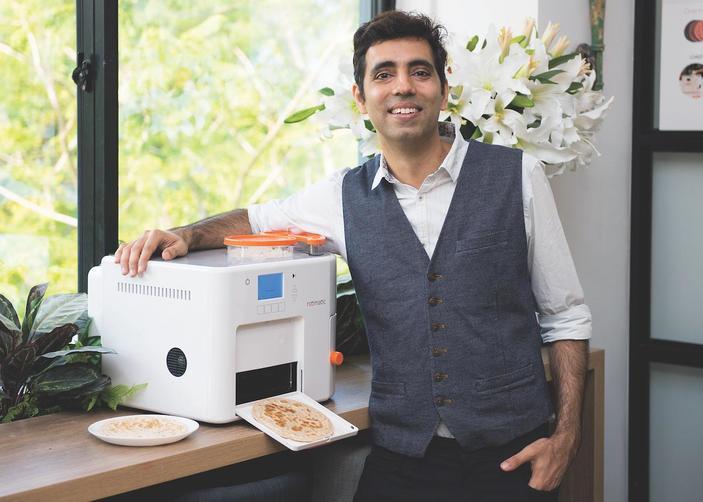
When Rishi Israni and Pranoti Nagarkar realized just how difficult it was to make roti, they set out to automate the process. More than a decade later, they’ve seen their humble Zimplistic Rotimatic evolve into a global sensation.

Roti, the traditional Indian flatbread, doesn’t look all that difficult to make. Zimplistic Co-CEOs and founders Rishi Israni and Pranoti Nagarkar, the husband-and-wife duo behind the Rotimatic, would disagree.

The first memory I have of roti is when my mother would make it. We’d ask every day for her to come, sit down, and have dinner with us, but she’d be tucked away making hot roti because she’d insist it’s best when it’s straight from the pan.
— Pranoti Nagarkar, Co-CEO, Rotimatic
Feeding her kids a “fresh and warm roti” was a way for her mother to show affection, Pranoti says. Because she spent so much time making it, though, she rarely got the chance to sit and eat with her children.
“I remember trying to make it as a child,” Rishi recalls, “and realizing it wasn’t an easy thing, but something that was difficult to do.”
Indeed, making roti can be taxing. Starting with whole-wheat flour and water and mixing it into a dough, the batch is kneaded into a circular shape and left for about 10 minutes before being rolled out into individual rounds. Rishi says it can take more than half an hour to make a family-sized serving.
“We eat it with our lunch and dinner, and our son has eaten it since he’s had teeth,” he says. “As our lifestyles became busier, though, we started making it less because it was so tedious. We’d eat more rice or supermarket roti, which is not as nutritious.”
That was the impetus behind the Rotimatic, a kitchen appliance that can make roti with just the touch of a button. Invented by Pranoti and Rishi in 2008, the device simplifies the cooking process, resulting in fresh roti in a matter of minutes.
It takes proportionate quantities of flour required to make each roti, kneads and flattens the dough into discs, and moves the roti onto a heating plate to cook.
With billions of roti made by hand every day in India, Rishi says it made sense to automate the process. “It’s been attempted on an industry-wide scale, but this was the first attempt by a start-up to create a disruptive innovation in the field.”
Although Rishi says other companies had tried to automate the process, he says the Rotimatic stood out because “it was the first to succeed”.
Admittedly, building something the size of a coffee machine to make roti was difficult. Rishi says that kneading and rolling the roti dough requires technical judgement, which meant that automation and AI had to be prioritized.
“Billions of dollars have been poured into self-driving cars,” he says. “People don’t realize that smaller appliances in the kitchen need similar complexity and attention.”
Flex Senai is helping Zimplistic scale from new product introduction to mass production. We also offer Zimplistic value-added Lean manufacturing, supply chain management, and engineering services to ensure timely delivery of high-quality products.
— Terence Ho, General Manager, Flex Senai, Malaysia
That’s why when it came time to bring the Rotimatic to market, the duo relied on Flex and Eastool Industries to support the development and manufacturing process.
“We have contract manufacturers who have helped guide us and who have a long record of success in the manufacturing sector, and we’ve been grateful for their help,” says Pranoti.
Today, the Rotimatic is available in the United States, Singapore, and the Middle East, and more than 50,000 units have been sold globally. Having raised $30 million USD in funding during 2018, Zimplistic has generated sales revenue of approximately $50 million USD and developed a devoted base of customers.
Rishi says that engagement has helped to spread the Rotimatic’s popularity, with a “Rotimatic Owners” Facebook group of particular interest to him.

There are about 15,000 fans who can discuss the meals they’ve made with the device. Some have made tortillas, wraps, or flatbreads and added proteins and other nutritional supplements. The biggest innovations we see are the ones our customers come up with using our technology.
— Rishi Israni, Co-CEO, Rotimatic
As owners make everything from mango samosas to kaja with their Rotimatic, Pranoti says the machine will continue to find fans. “It’s a very versatile piece of technology.”
She adds that because the Rotimatic is so easy to use, it can help people lead healthier lifestyles. “Cooking a roti is easier than ever, meaning people can eat at home more often and manage their health better.”
The Rotimatic’s integration of AI and IoT is integral to its design. Rishi and Pranoti tell The CEO Magazine they are excited to bring innovation to the kitchen appliance sector.
Further, Zimplistic prepares to bring the Rotimatic to retailers throughout India, they’re confident the device will continue to find more customers around the globe.
“We’ve created a piece of technology that can make something that is consumed by 25% of the world’s population,” says Rishi.
“There are titans in the industry who are now contending with a younger and more innovative company that has created a whole new business category.”
This article originally appeared in CEO Magazine in May 2019.



